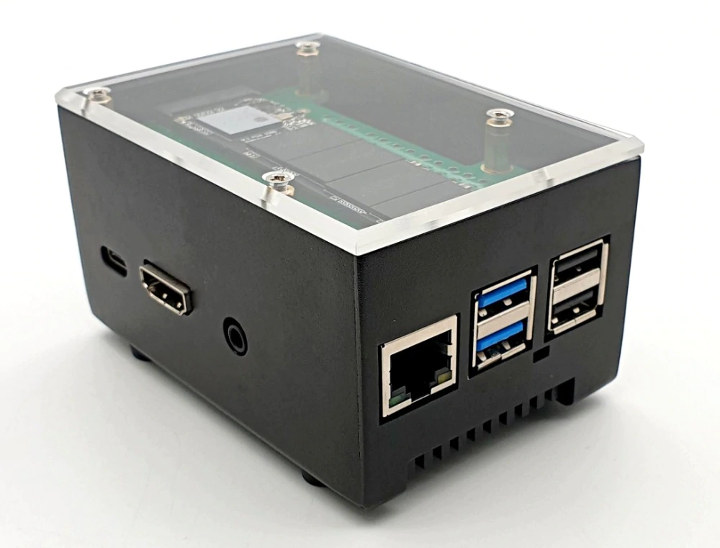Rock Pi 4 is an affordable single board computer inspired by Raspberry Pi 3 Model B, but equipped with a more powerful Rockchip RK3399 hexa-core processor, and selling for around $80 with 4GB RAM, Gigabit Ethernet, and 802.11ac + Bluetotoh 5.0 wireless module.
I’ve just come across ecoPI STARTER mini PC kit for the board with an aluminum case that can also fit an M.2 extension board to add an M.2 NVMe SSD card.
The kit comes with an aluminum housing, an acrylic cover, some screws, bolts and silicon feet, and short ribbon cables for M.2 card. The acrylic cover is designed to let the WiFi & Bluetooth signal go through, but I’m not so confident the case won’t cause issue with WiFi.
It’s currently sold for $16.50 on Aliexpress. You’ll also need to get Rock Pi 4A or 4B for $40 and up, M.2 Extension board ($8.39), heatsink ($8.39), and your own SSD and power supply.
The video below shows how to assemble the complete ecoPI STARTER kit with an M.2 NVMe SSD. Note that contrary to the photo above, the acrylic case has some ventilation holes.
If you’d also like to add a PoE HAT to your configuration, there’s another similar case with extra height and integrated heatsink called ecoPI Pro HP sold for $35.90 on the same Aliexpress store.

Jean-Luc started CNX Software in 2010 as a part-time endeavor, before quitting his job as a software engineering manager, and starting to write daily news, and reviews full time later in 2011.
Support CNX Software! Donate via cryptocurrencies, become a Patron on Patreon, or purchase goods on Amazon or Aliexpress





